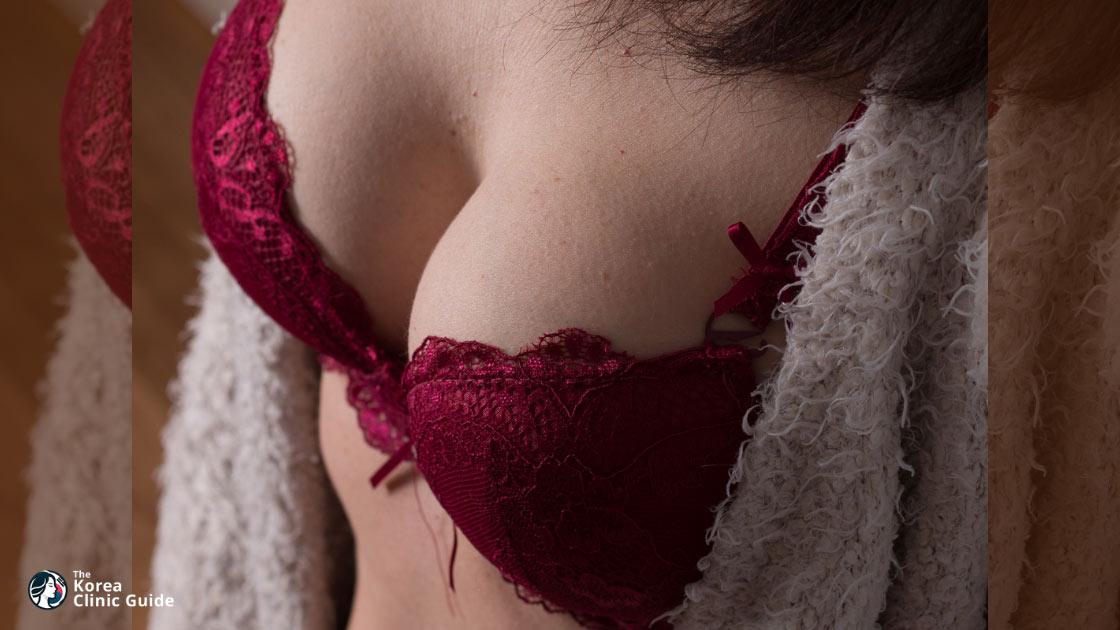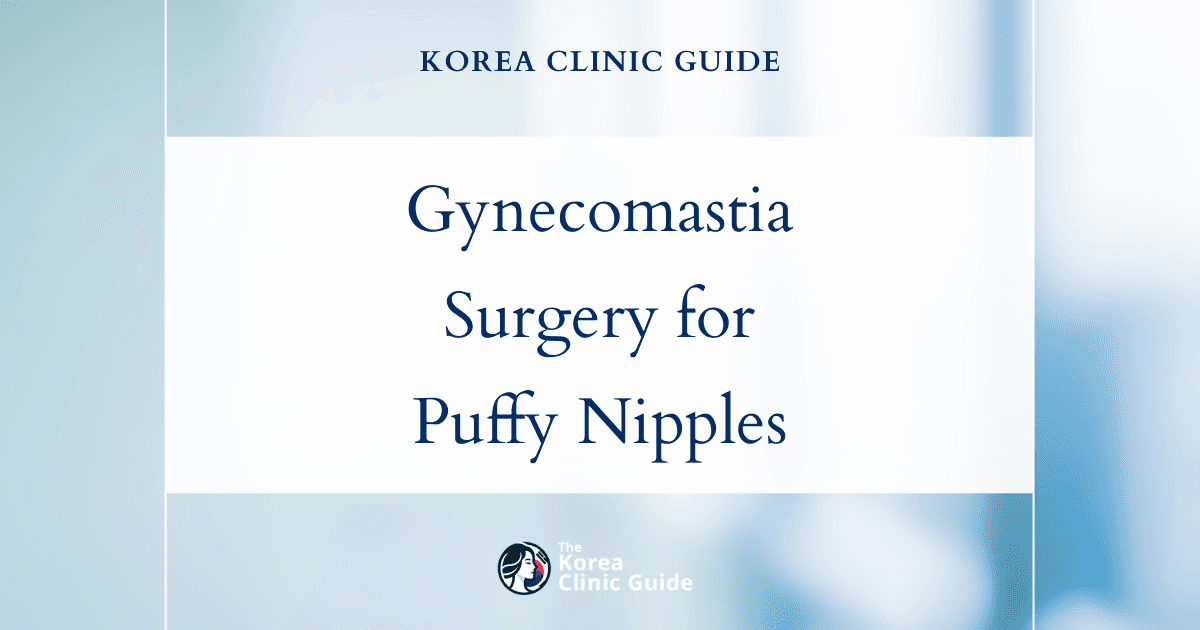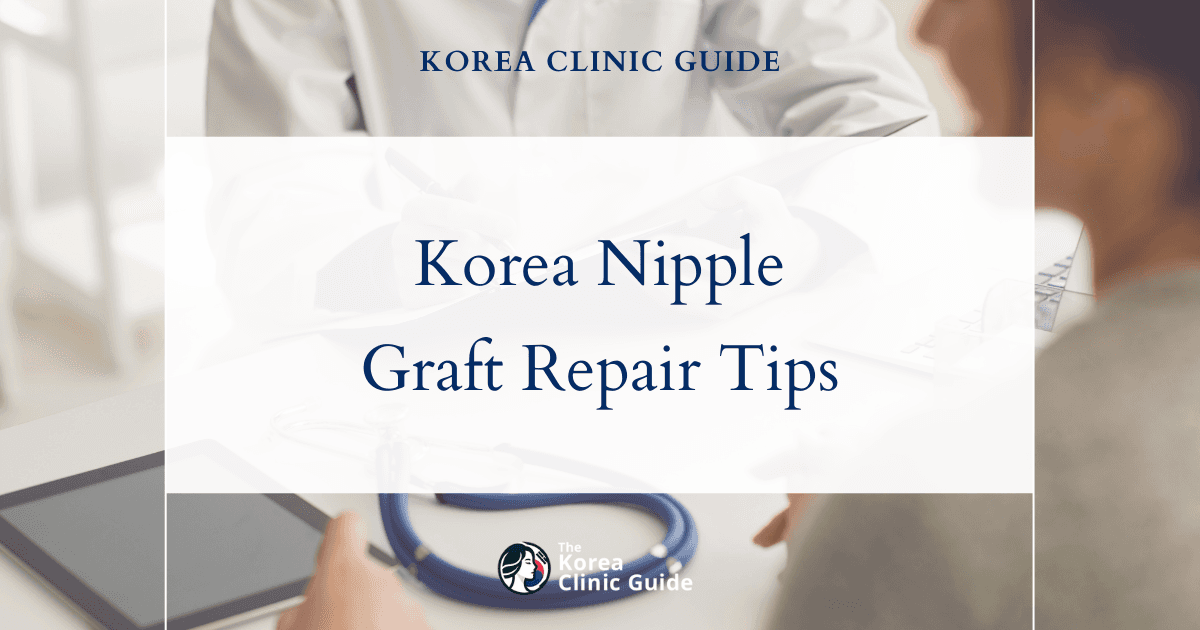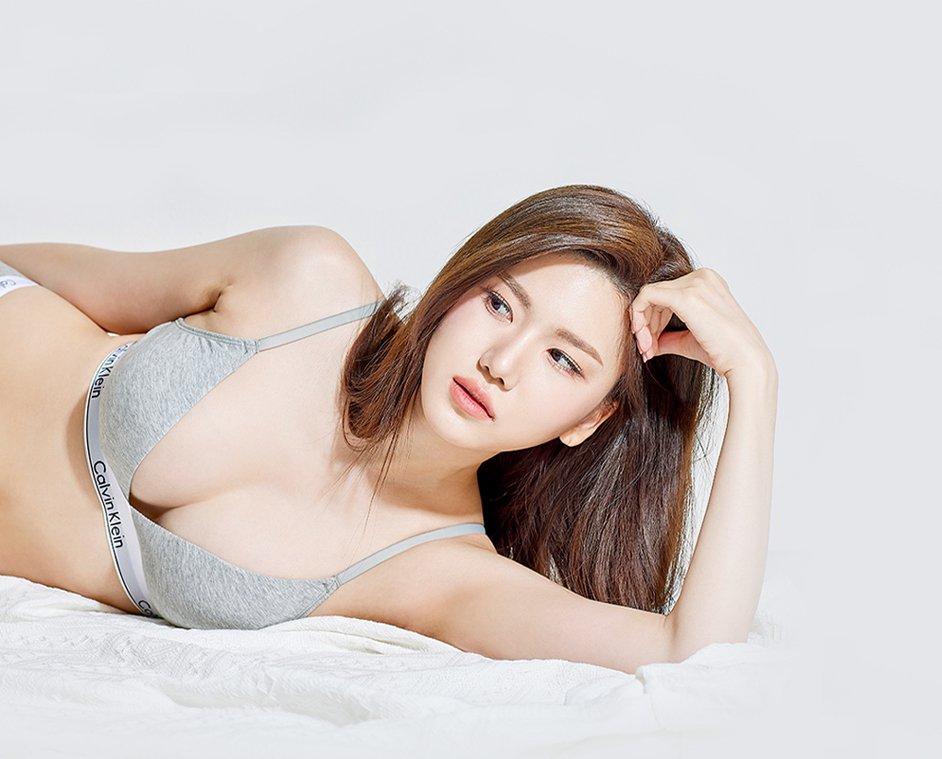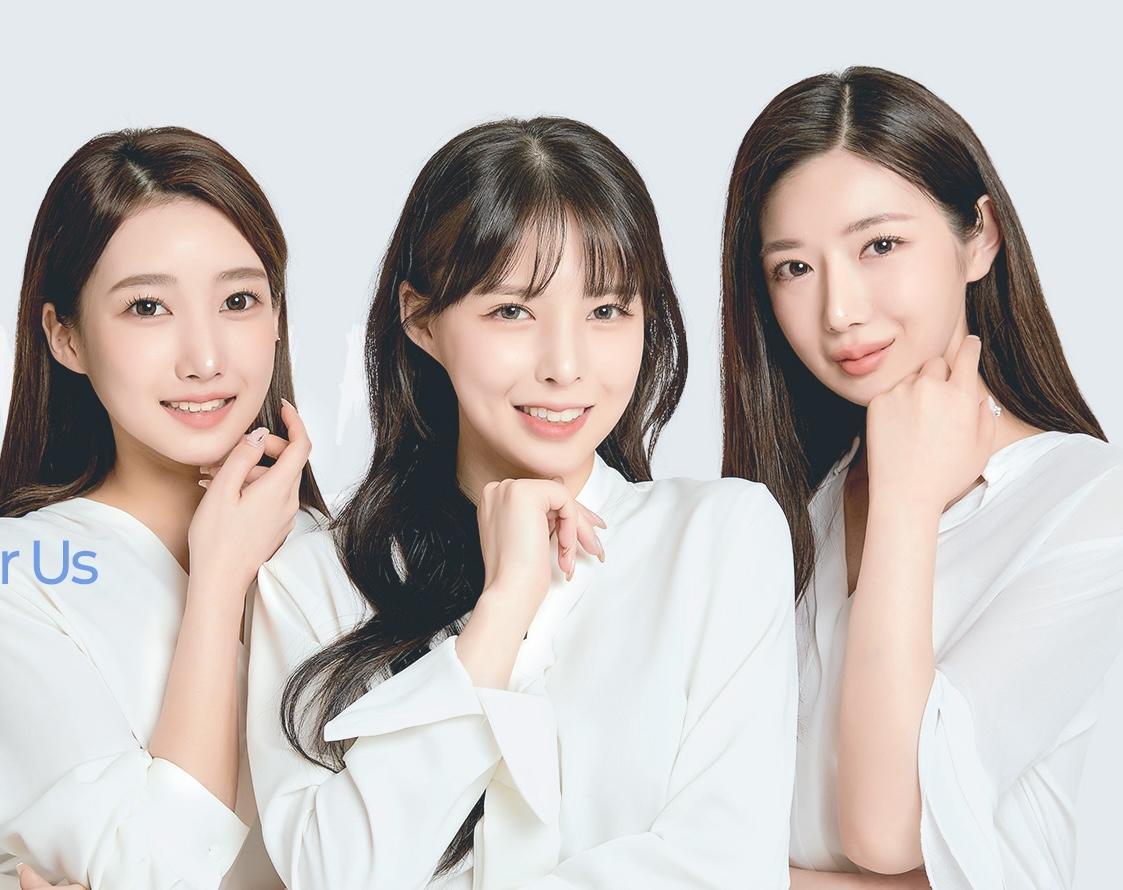Medical Tourism Blog
Correcting Chest Asymmetry Post-Scoliosis Surgery: Breast Augmentation Procedures in Korea
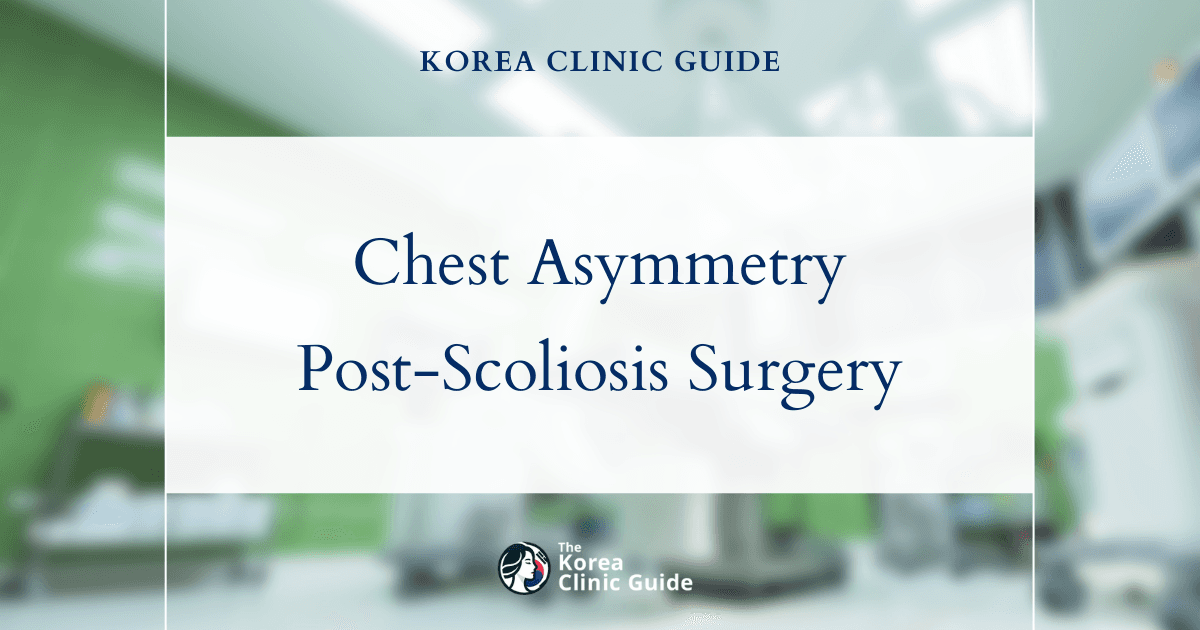
Table of contents
- Understanding Chest Asymmetry Post-Scoliosis Surgery
- Breast Augmentation: A Detailed Overview
- Best Clinics in Korea for Chest Asymmetry Post Scoliosis Surgery
- Navigating Breast Augmentation in South Korea for Medical Tourists
- Cost Analysis: Breast Augmentation in South Korea vs. Global Destinations
- Patient Journeys: Breast Augmentation for Chest Asymmetry Post-Scoliosis Surgery
- Conclusion
- References
This guide is designed to help patients, especially those who have had scoliosis surgery and now face chest asymmetry—often called a "sunken chest side." It offers clear, compassionate, and expert advice on how breast augmentation can help, covering the procedure itself, the experience of seeking treatment in South Korea as a medical tourist, costs involved, and the positive outcomes patients can expect. While scoliosis surgery corrects spinal curvature, it often leaves or worsens chest wall irregularities, affecting both appearance and mental well-being. This report highlights breast augmentation as a key solution to these post-surgical aesthetic challenges.
Understanding Chest Asymmetry Post-Scoliosis Surgery
Chest asymmetry means one side of the chest looks different in shape, size, or projection compared to the other. This can show up as a depression, protrusion, or general unevenness.
Common Pseudonyms and Related Conditions
The phrase "sunken chest side" usually refers to Pectus Excavatum (PE), the most common congenital chest wall deformity. It involves an inward growth of the breastbone, creating a concave chest appearance. Other names include cobbler's chest, hollowed breast, or funnel breast. This condition results from excessive growth of the lower costal cartilages, pushing the sternum inward, often more on the right due to sternal rotation.
Other related deformities include:
- Pectus Carinatum (PC): Known as pigeon breast, chicken breast, or keeled chest, this less common condition features an outward bowing of the breastbone and ribs. It can be asymmetric, with one side pushed out more.
- Poland Syndrome: A rare birth defect causing lateral rib depression, usually on the right side, with underdeveloped pectoralis minor muscles and breast tissue.
Though usually congenital, trauma can also cause these deformities.
| Deformity Name | Common Pseudonyms | Brief Description | Typical Appearance |
|---|---|---|---|
| Pectus Excavatum | Cobbler's Chest, Sunken Chest | Inward growth of breastbone and ribs | Concave or depressed chest wall |
| Pectus Carinatum | Pigeon Breast, Chicken Breast | Outward protrusion of breastbone and ribs | Bowed out or prominent chest |
| Poland Syndrome | Poland's Anomaly, Poland's Syndactyly | Lateral rib depression with muscle/breast underdevelopment | Asymmetric chest, smaller/absent breast |
How Scoliosis and its Surgical Correction Can Influence Chest Wall Appearance
Scoliosis affects the spine and thorax in three dimensions and often coexists with chest wall deformities like pectus excavatum. About 15% of children with pectus carinatum also develop scoliosis.
Spinal fusion surgery effectively straightens the spine and stops curve progression but often doesn’t fully fix rib cage or chest wall deformities. Rib deformities mainly stem from uneven rib development, not just vertebral rotation. Therefore, spinal surgery alone can’t correct rib asymmetry or stop its progression. Post-surgery, rib humps may remain or worsen, especially in younger patients.
Breast asymmetry (BA) is common in adolescent idiopathic scoliosis (AIS) patients, often due to chest wall deformity and trunk twisting. Breast asymmetry may stay the same or worsen after scoliosis surgery. Sometimes, rib or chest wall resection during scoliosis surgery can even contribute to scoliosis progression, especially if ribs above the sixth are involved. This shows that while spinal surgery fixes the spine’s structure, chest wall and breast asymmetries often persist, requiring specialized treatments for a balanced body shape. Patients with significant chest wall issues should discuss both spinal and aesthetic concerns before surgery for a holistic approach.
Physical and Psychological Impact on Patients
Chest wall deformities can cause physical symptoms like shortness of breath during exercise, reduced stamina, fatigue, chest pain, and irregular heartbeat. Severe scoliosis (Cobb angle >70°) can limit lung size, causing Thoracic Insufficiency Syndrome (TIS), where thorax deformity impairs breathing.
Beyond physical effects, chest deformities often cause psychological distress. Patients report embarrassment, low self-esteem, and sometimes depression. For young women, visible chest deformities and uneven breasts can be deeply sensitive issues, often hidden from loved ones. This can lead to feelings of being "different" or "not normal," impacting social and intimate relationships. Discussing and pursuing surgery requires courage. Breast augmentation here is more than cosmetic—it’s reconstructive, improving mental health, confidence, and quality of life.
Breast Augmentation: A Detailed Overview
Breast augmentation, also called augmentation mammaplasty or "boob job," is a cosmetic surgery to increase breast size and improve shape. It aims to enhance fullness, projection, and body balance, boosting self-image and confidence. It can restore volume lost after weight loss or pregnancy and correct natural asymmetry. Note that breast augmentation alone doesn’t fix severe sagging; a breast lift (mastopexy) may be needed.
Defining Breast Augmentation: Implants vs. Fat Transfer vs. Hybrid Approaches
Several methods allow personalized results:
- Breast Implants: The most common, involving insertion of implants varying in size, shape, material, and texture.
- Fat Transfer Breast Augmentation: Fat is liposuctioned from areas like hips or thighs, purified, and injected into breasts. This natural option suits those wanting minor volume increase or contouring, with enough donor fat and stable weight.
- Hybrid Breast Augmentation: Combines implants with fat transfer for a natural look and significant volume. Platelet-Rich Plasma (PRP) may be used to improve fat graft survival and reduce inflammation.
Types of Breast Implants: Materials, Shapes, and Profiles
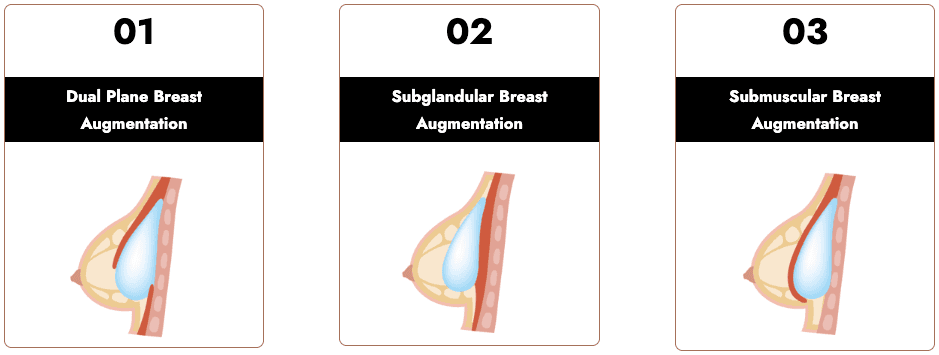
Implants vary to match anatomy and goals:
- Filling Type:
- Saline-filled: Silicone shell filled with sterile saline after placement.
- Silicone gel-filled: Pre-filled with cohesive silicone gel.
- Highly Cohesive Silicone ("Gummy Bear"): Viscous, form-stable gel that holds shape, reduces rippling, ideal for patients with less breast tissue like those with pectus excavatum. Textured surface prevents migration.
- Shape:
- Round: Fuller upper breast for a rounded look.
- Shaped (anatomical): Gently sloping, natural breast profile. Especially useful for complex asymmetries.
- Size and Profile:
- Sizes range from ~150cc to 800cc+. About 200cc equals one cup size. Different sized implants are often used to balance asymmetry.
- Profile refers to how much the implant projects from the chest. For pectus excavatum, conservative size and profile prevent implants from moving too close medially.
Understanding Surgical Techniques and Incision Options

Breast augmentation is done under general anesthesia, lasting 1-3 hours depending on the case.
Incision options include:
- Inframammary: Under the breast fold, common and preferred for good access.
- Peri-areolar: Around the areola edge.
- Trans-axillary: In the armpit.
- Transumbilical: Through the belly button (less common).
The surgeon creates a pocket for the implant:
- Submuscular: Under the pectoral muscle, recommended for pectus excavatum with lateral pocket extension to prevent medial migration and improve coverage.
- Subglandular: Behind breast tissue, over the muscle.
Incisions are closed carefully; scars fade over time.
The Recovery Process: What to Expect Post-Surgery
Recovery unfolds in stages:
- Immediate Post-Op (Days 1-3): Patients feel groggy, need someone to assist. Swelling, bruising, discomfort peak around day 3-5 then ease. Ice packs help. A surgical bra is worn 24/7 for weeks. Showering allowed after day 3.
- First Week: Minimal activity, regular short walks indoors, gentle arm stretches, good posture. Office workers can return in 2-7 days. No driving or alcohol for a week.
- Weeks 2-6: Full arm motion allowed after 2 weeks, lifting limited to under 10 lbs for 6 weeks. Cardiovascular exercise resumes after 3 weeks. Strenuous activities avoided for 3 weeks. No submerging incisions until fully healed (~4-6 weeks).
- Months 1-9: Breasts settle and "fluff," shifting to natural shape over 6-9 months. Nerve sensations like tingling or burning may occur but fade.
- Long-Term: Scars improve up to 2 years. Breasts may heal unevenly at first but become symmetrical.
| Timeframe | Expected Symptoms | Activity Restrictions | Key Milestones |
|---|---|---|---|
| Immediately Post-Op (Day 1-3) | Grogginess, swelling, bruising, discomfort | Bed rest Day 1, limited arm movement, no driving/alcohol | Shower from Day 3, start short indoor walks |
| First Week (Days 4-7) | Discomfort lessens, swelling persists | Minimal activity, no heavy lifting | Return to office work (2-7 days), gentle stretches |
| Weeks 2-3 | Swelling reduces, breasts begin settling | Full arm motion after 2 weeks, no aerobic exercise for 3 weeks | Breasts take shape, return to strenuous jobs (~3 weeks) |
| Weeks 4-6 | Continued settling, swelling mostly gone | No submerging incisions, lifting <10 lbs for 6 weeks | Resume cardio exercise at 3 weeks |
| Months 1-9 | Breasts settle and fluff, nerve sensations | Strenuous activity allowed after 6-8 weeks | Final breast appearance by 6-9 months |
| Up to 2 Years | Scars fade and improve | None beyond healing | Final scar appearance |
Breast augmentation alone often isn’t enough to correct complex chest wall asymmetry due to underlying skeletal issues. Specialized implants and surgical techniques are needed. Shaped, highly cohesive gel implants allow precise volume placement for better symmetry. Textured silicone implants and submuscular placement with lateral pocket extension help prevent migration and rippling, especially in pectus excavatum. This procedure requires surgeons with specific expertise in chest wall deformities, as general cosmetic surgeons may lack the necessary experience for optimal results.
Best Clinics in Korea for Chest Asymmetry Post Scoliosis Surgery
Listed below are the best clinics in Korea for chest asymmetry post scoliosis surgery:
| Clinic Name | Key Features | Special Techniques |
|---|---|---|
| Seojin Plastic Surgery Clinic | Located in Gangnam, Seoul; over 16 years of surgical expertise led by Dr. Lee Hyungmin; nationally awarded (KBS N Korea Broadcasting Brand Awards, Top 100 Good Doctors in Korea 2022); over 2,300 breast surgeries; direct, one-doctor personalized care; advanced technology including 3D breast implant modeling and free trial bra service; comprehensive services including body sculpting and dermatology; ongoing participation in leading academic conferences | Customized Microscale Dual Plane Technique for chest asymmetry; 3D Spatial Dissection for symmetry and swelling minimization; intraoperative sizer for best shape and size match; scar-minimizing implant approaches for sagging correction without large scars; pioneering hybrid breast augmentation combining implants with PRP-enhanced fat grafting for natural, symmetrical results |
| THEPLUS Plastic Surgery Clinic | Located in Garosu-gil, Gangnam, Seoul; team of renowned, board-certified surgeons (Dr. Lee, Dr. Kim, Dr. Jeong); Dr. Lee—Specialist at Seoul National University Hospital; Dr. Kim—internationally awarded 3D implant expert; Dr. Jeong—President of the Korean Society of Plastic Surgeons; four-floor facility with state-of-the-art equipment; comprehensive, research-driven patient care; respected educators and society members | Meticulous individualized correction for chest asymmetry post scoliosis surgery; combination of functional and aesthetic surgical techniques; advanced 3D implant and facial contouring expertise applied to chest reconstruction; seamless consult-to-recovery care overseen by leading surgeons |
| Okay Plastic Surgery Clinic | Renowned breast surgery expertise led by Dr. Cho; exceptional record in complex breast reduction and augmentation; ongoing research and publication activity; highly individualized treatment plans based on each patient’s history and goals; dedicated, multidisciplinary care team; presence of highly experienced female plastic surgeon; sincerity and precision as core values | Specialist in challenging asymmetry and large reduction cases after scoliosis; evidence-based, cutting-edge techniques for even the most complex chest differences; full-spectrum, precise reconstructive approaches tailored to each individual |
Seojin Plastic Surgery Clinic
Located in the heart of Gangnam, Seoul, Seojin Plastic Surgery Clinic is a premier destination for aesthetic transformation, led by the renowned Dr. Lee Hyungmin. With more than 16 years of surgical experience, the clinic excels in delivering advanced, customized solutions for patients, especially those dealing with complex chest asymmetry after scoliosis surgery. Seojin combines innovative surgical techniques, state-of-the-art technology, and a deeply personalized, one-doctor approach to provide unmatched safety, precision, and natural results. The clinic’s reputation for excellence is underscored by prestigious national awards and a proven record of outstanding outcomes.
Why Seojin Plastic Surgery Clinic is the best choice for Chest Asymmetry Post Scoliosis Surgery:
-
Nationally Recognized Excellence
- Ranked No. 1 in the Breast Augmentation Category at the KBS N Korea Broadcasting Brand Awards.
- Selected as one of the Top 100 Good Doctors in Korea in 2022.
- Over 2,300 breast surgeries performed, demonstrating extensive hands-on expertise.
-
Advanced, Patient-Centered Technology
- 3D breast implant modeling for precise outcome visualization, pre-surgery planning, and patient education.
- Free Breast Implant Trial Bra Service allows patients to select the best size and design before surgery.
-
Specialized Surgical Techniques for Asymmetry
- Customized Microscale Dual Plane Technique: Adjusts for ribcage abnormalities and breast tissue unevenness, crucial for scoliosis-related chest asymmetry.
- 3D Spatial Dissection: Minimizes swelling and promotes symmetrical results through meticulous internal sculpting.
- Intraoperative Sizer Use: Guarantees the closest possible match in shape and size by verifying symmetry before final implant placement.
- Scar-minimizing options for sagging correction, avoiding large mastopexy scars with specialized implant use.
-
Pioneering Hybrid Breast Augmentation
- Combines implants with fat grafting—fat harvested from the patient’s own thighs or abdomen, further enhanced with PRP (Platelet-Rich Plasma) to increase graft survival and reduce inflammation.
- Delivers softer, more naturally contoured breast profiles, particularly beneficial in post-scoliosis symmetry correction.
-
Direct, Personalized Care
- Dr. Lee Hyungmin personally oversees every consultation, procedure, and follow-up, ensuring holistic and attentive care throughout the entire journey.
- As a one-doctor clinic, consistency and safety are prioritized at each step.
-
Commitment to Continued Excellence
- Active participation in leading academic conferences (Motiva and Mentor), ensuring up-to-date knowledge and techniques in breast surgery and implant technology.
-
Comprehensive Services Beyond Breast Surgery
- Expertise in body sculpting, hair transplantation, and dermatology, making the clinic a complete hub for aesthetic and reconstructive solutions.
For those navigating the challenges of chest differences after scoliosis surgery, Seojin Plastic Surgery Clinic’s blend of experience, technology, and compassion sets the standard for achieving the most harmonious and confident results.
You can check out their website here: Seojin Plastic Surgery Clinic Website
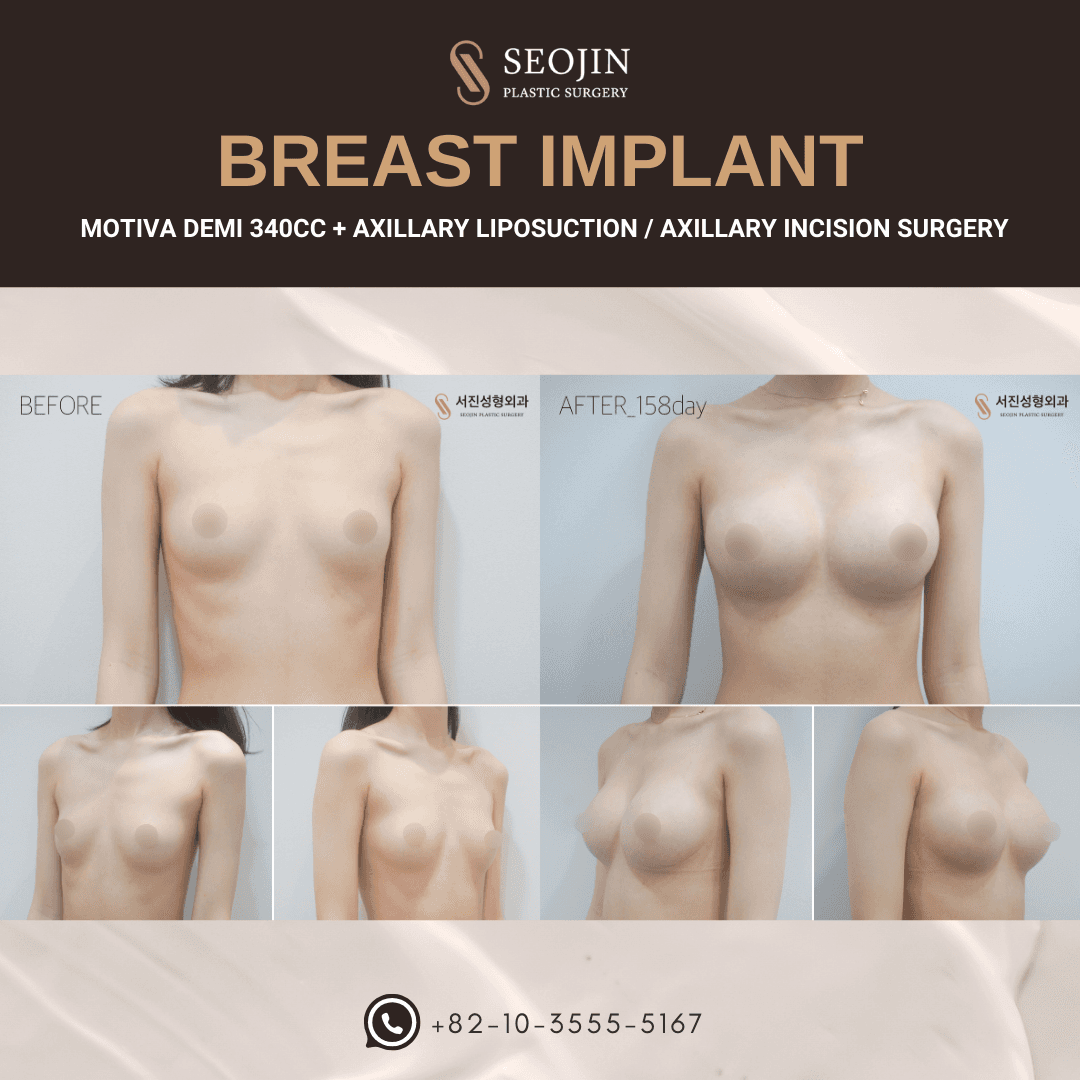
THEPLUS Plastic Surgery
THE PLUS Plastic Surgery clinic, located in the vibrant Garosu-gil area of Gangnam, Seoul, stands at the forefront of advanced cosmetic surgery in Korea. With a team of highly experienced, board-certified plastic surgeons, including Dr. Lee, Dr. Kim, and Dr. Jeong, THE PLUS specializes in meticulous treatments for chest asymmetry following scoliosis surgery. Dr. Lee’s distinguished background in breast augmentation and her tenure as Surgery Specialist at Seoul National University Hospital, along with Dr. Kim’s internationally awarded expertise in 3D implants and facial contouring, ensures that patients receive care from leaders in the field. Dr. Jeong, President of the Korean Society of Plastic Surgeons, brings a unique focus on combining function and aesthetics to every procedure, contributing to the clinic’s reputation for delivering natural and enduring results.
At THE PLUS, every patient benefits from a comprehensive approach that integrates the latest research, meticulous surgical technique, and a commitment to individualized care. The clinic’s four-floor facility is fully equipped to provide seamless service from consultation through recovery, with each step overseen by surgeons who are respected educators, researchers, and active members of international plastic surgery societies. This dedication to excellence and innovation has made THE PLUS a premier choice for those seeking correction of chest asymmetry post scoliosis surgery, as well as a wide range of cosmetic and reconstructive procedures.
You can check out their website here: THEPLUS Plastic Surgery Website
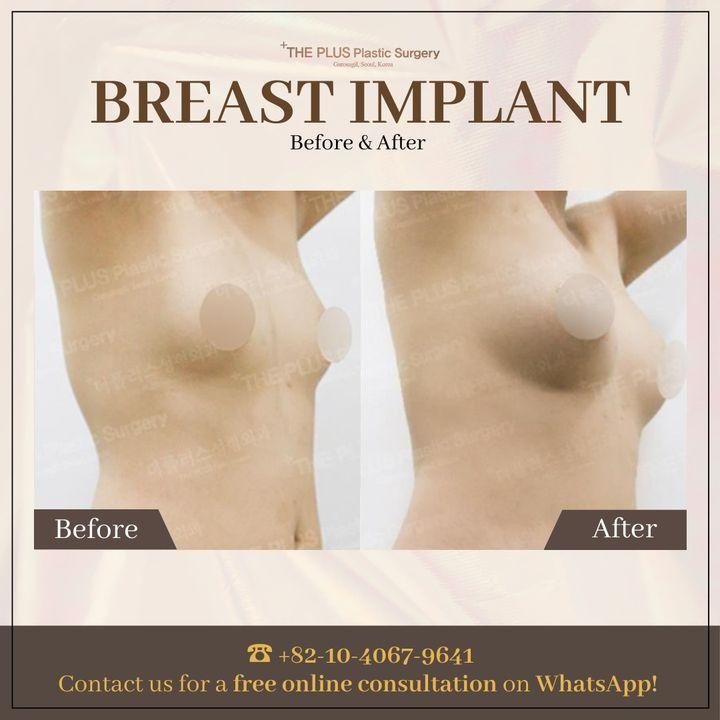
Okay Plastic Surgery Clinic
Okay Plastic Surgery Clinic stands out as Korea’s premier destination for addressing chest asymmetry following scoliosis surgery. Under the expert guidance of Dr. Cho, a renowned specialist in breast surgery with a substantive record of ongoing research and scientific publication, the clinic offers a depth of expertise rarely matched in the field. Dr. Cho’s skill set encompasses not only standard augmentation but also extends to the most challenging cases involving significant breast reduction—complex procedures that most clinics are unequipped to handle. The clinic’s philosophy is built on sincerity, precision, and fully individualized care; every treatment plan is meticulously tailored to each patient’s unique medical history and aesthetic goals. Supported by a dedicated team of specialized professionals, including a highly experienced female plastic surgeon, Okay Plastic Surgery Clinic guides patients through a comprehensive and compassionate journey of transformation, employing cutting-edge techniques and evidence-based approaches that guarantee optimal results even in the most complex instances of post-surgical chest asymmetry.
You can check out their website here: Okay Plastic Surgery Clinic Website
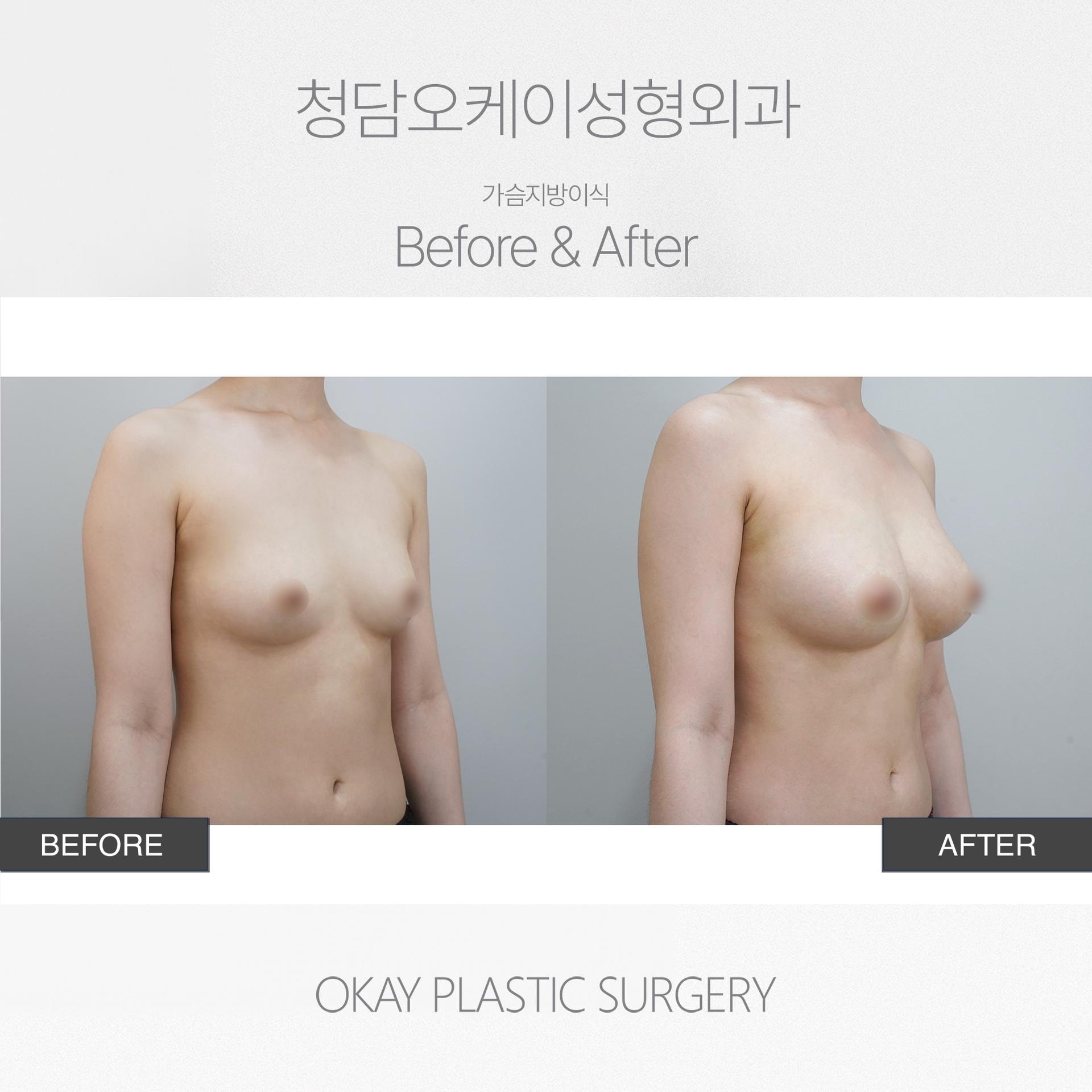
Navigating Breast Augmentation in South Korea for Medical Tourists
South Korea, especially Seoul’s Gangnam district, is a global leader in cosmetic surgery. It boasts advanced technology, highly skilled surgeons, and competitive prices. Lower costs don’t mean lower quality; they reflect high procedure volumes and an efficient healthcare system. Korean surgeons focus on meticulous techniques, minimal scarring, and natural results aligned with Korean beauty ideals emphasizing harmony and balance.
The Step-by-Step Process for International Patients: From Initial Consultation to Post-Operative Care
- Choosing the Right Clinic: Research is key. Verify accreditations, surgeon qualifications, patient reviews, and before-and-after photos. Top clinics include Seojin Plastic Surgery Clinic, THEPLUS Plastic Surgery, and Okay Plastic Surgery Clinic.
- Consultation Process: Usually starts online, then in-person after arrival. Surgeons discuss goals, assess anatomy, and recommend implants and incision sites. Many clinics offer translation and multilingual staff.
- Pre-Surgery Preparation: Medical tests ensure health and suitability. Patients avoid blood thinners, alcohol, and smoking before surgery. Plan to stay 1-2 weeks in Korea for surgery and initial recovery.
- The Surgical Procedure: Under general anesthesia, lasting 1-2 hours. Surgeon makes incision, creates implant pocket, and places implant.
- Post-Surgery Care: Patients monitored before discharge. Detailed instructions on pain management, complication signs, and wound care provided. Support bras worn to aid healing.
- Follow-Up Appointments: Essential for healing checks and concerns. Many clinics offer virtual follow-ups for international patients.
Key Considerations for Selecting a Clinic and Surgeon Abroad
For complex chest asymmetry cases, choose surgeons with proven experience correcting breast and chest wall deformities. Ask about their approach to asymmetry, use of specialized implants, fat grafting experience, and preferred implant placement techniques. Ensure clear communication with translation services if needed. Understand what the package includes—post-op care, accommodation, transfers—as these affect the overall experience and cost.
South Korea’s medical tourism often uses all-inclusive packages covering medical insurance, pre-op tests, accommodation, airport transfers, and language assistance. This reduces hidden costs and logistical stress, especially for complex procedures like breast augmentation for chest wall asymmetry, offering a smooth, reassuring experience.
Cost Analysis: Breast Augmentation in South Korea vs. Global Destinations
Typical Costs in South Korea and What's Included in the Package
Breast augmentation in South Korea typically costs between $3,000 and $12,800 USD (about 7,000,000 to 18,000,000 KRW). The average is $5,000 to $10,000 USD.
Packages often include:
- Special Medical Insurance: Covers unexpected complications.
- Medical Tests: Preoperative health screening.
- Accommodation: Patient guesthouses or partner hotels.
- Airport Transfer: Pick-up and drop-off services.
- Language Assistance: Interpretation and translation.
Costs vary by surgeon experience, clinic, and implant type.
A Comparative Look at Costs in the USA, Europe, Turkey, Thailand, and Other Regions
| Country | Price Range (USD) | Key Inclusions/Considerations |
|---|---|---|
| South Korea | $3,000 - $12,800 (Avg. $5,000 - $10,000) | Often includes insurance, pre-op tests, accommodation, transfers, language help; high volume and efficiency. |
| United States | $3,000 - $12,000 (Avg. $6,000 - $12,000) | Surgeon, facility, anesthesia, prescriptions, garments, tests included; other services separate. |
| United Kingdom | $10,000 - $12,000 | High-quality care, strict regulations; may exclude accommodation and post-op care. |
| Europe | $5,500 - $11,000 | Varies by country; package inclusions vary. |
| Turkey | $2,000 - $7,000 | Often includes pre-op tests, post-op care, accommodation, transport; verify credentials due to lower costs. |
| Thailand | $2,700 - $12,000 (Avg. $4,000 - $8,000) | Wide range; confirm package details. |
| Australia | $5,000 - $6,500 (transgender breast augmentation) | Includes consultation; other costs may be separate. |
| Malaysia | $6,000 - $11,000 | Similar to Korea with insurance, tests, accommodation, transfers, language support. |
Assessing the Value Proposition for Medical Tourists
South Korea offers competitive pricing bundled with comprehensive care packages that enhance the patient experience. This includes insurance, tests, accommodation, transfers, and language support, reducing stress and hidden costs. Advanced technology, experienced surgeons, and an efficient system allow high-quality care at accessible prices, making Korea an attractive choice compared to Western countries.
Patient Journeys: Breast Augmentation for Chest Asymmetry Post-Scoliosis Surgery
How Breast Augmentation Specifically Addresses "Sunken Chest Side" and Other Asymmetries
For "sunken chest side" patients, often with Pectus Excavatum, breast augmentation reduces the concave appearance by placing implants wider on the chest to fill the depression and smooth contours. This corrects breast asymmetry, creating fuller, shapelier breasts with defined cleavage, balancing the body silhouette.
In Poland Syndrome, reconstructive surgery with breast or pectoral implants and fat grafting restores symmetry. Procedures like breast reduction or lift on the unaffected side may be recommended. Breast augmentation masks the skeletal deformity but offers significant aesthetic and psychological benefits.
Specialized Surgical Approaches for Complex Cases
Standard breast augmentation often falls short for complex asymmetries due to skeletal and soft tissue irregularities.
Specialized techniques include:
- Shaped Highly Cohesive Gel Implants: Allow precise volume placement for improved symmetry and stable results.
- Fat Grafting (Lipofilling): Adds softness and shape, can be combined with implants for natural outcomes.
- Custom-Made Chest Wall Implants: Silicone implants designed to fill chest depressions without altering ribs, less invasive than orthopedic surgeries, sometimes combined with breast implants.
For scoliosis patients, surgeons may use different implant sizes or profiles on each side to balance asymmetry. This complexity demands surgeons with deep expertise in breast implants and chest wall deformities. Patients should research thoroughly and discuss implant choices and fat grafting during planning.
Patient Outcomes and Psychological Transformation
Patients with chest wall asymmetry post-scoliosis surgery often report high satisfaction after breast augmentation. They gain not just size increase but significant shape and symmetry improvement, addressing a long-standing source of distress.
Psychologically, patients experience less visible chest concavity, better body proportion, improved self-esteem, confidence, and clothing fit. Feeling "pretty and normal" after years of self-consciousness is deeply rewarding. The courage to pursue surgery often leads to profound positive changes in self-image and quality of life.
Conclusion
Chest asymmetry after scoliosis surgery is a challenging issue affecting physical comfort and mental health. While spinal surgery corrects the spine, chest wall and breast asymmetries often remain, causing distress. Breast augmentation offers an effective solution but requires specialized techniques and experienced surgeons to address complex deformities. South Korea stands out as a top medical tourism destination, combining advanced technology, expert surgeons, and comprehensive, all-inclusive care packages that simplify the patient journey. Understanding the deformity and available treatments empowers patients to achieve improved appearance, confidence, and quality of life.
References
1, 2, 3, 4, 5, 6, 7, 8, 9, 10, 11, 12, 13, 14, 15, 16, 17, 18, 19, 20, 21, 22, 23, 24, 25, 26, 27, 28, 29, 30


